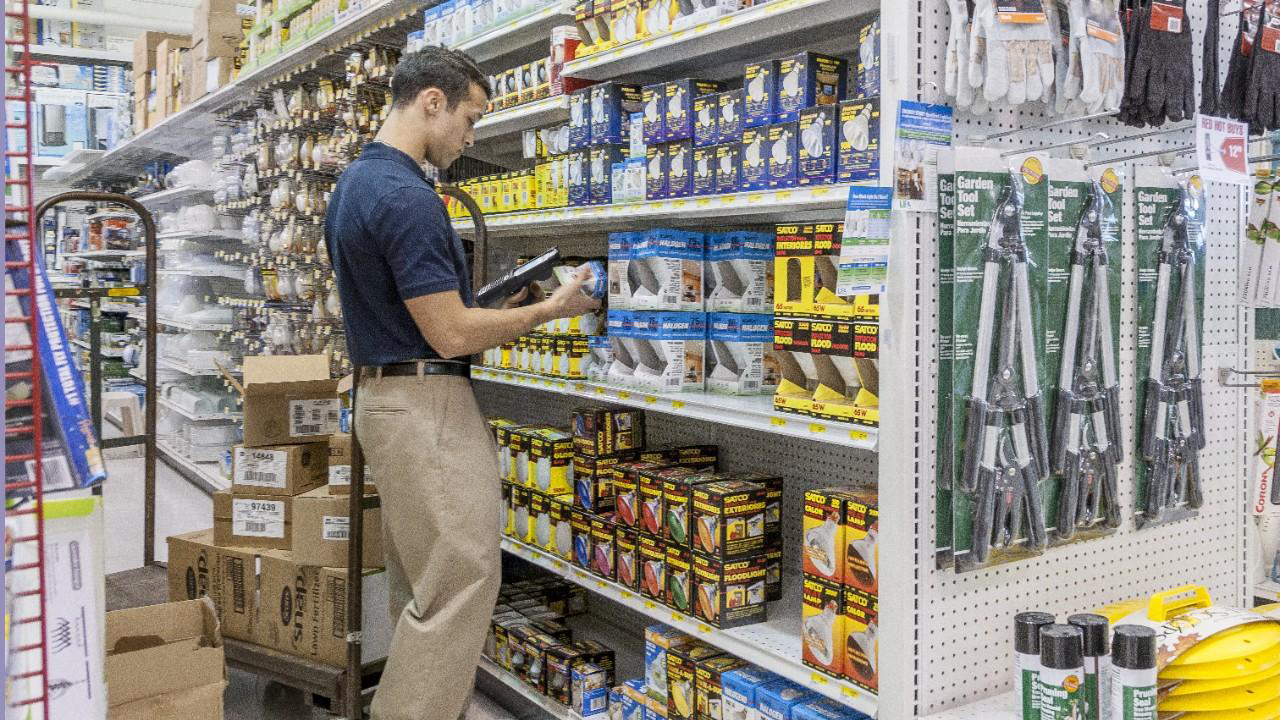
Not Sure How to Get Started with a Self-Directed Physical Inventory Program in Your Retail Store? (Or Even if You Should?)
If you read my blog post last week about the challenges that retailers face when outsourcing physical inventory counts, you’ll probably agree that it’s not really the most convenient or cost-efficient way to gain visibility into – or control over – on-hand, in-store inventory.
The reality is that empowering your own employees to fully manage large-scale retail inventory events is the most surefire way to maintain control over your inventory process and people; ensure continuity between inventory events and data systems; establish credibility for your counts and ultimately build confidence in your inventory decisions. As such, “in-sourcing” inherently becomes the most cost-efficient and convenient way to conduct routine cycle counts and annual wall-to-wall inventory events.
I think retailers have understood these requirements ever since mobility-based inventory management solutions first hit the market nearly 30 years ago. So, why are self-directed programs just now becoming retailers preferred approach to performing physical inventory audits?
If I’m being honest, I believe a few things needed to happen before retailers felt completely comfortable shifting the burden back onto their teams:
- They needed proof that the mobility-based solutions that store associates would use to complete these critical full-store inventory scans were fully mature and “fool-proof.” Zebra’s inventory solutions have been used to conduct tens of thousands of inventory counts in 58 countries each year for the last several years. They will be used by over 60,000 stores in 2019 alone. And, though these retailers deemed these self-directed solutions to be “mature” enough to adopt years ago, we are constantly refining our solutions to simplify configuration and deployment for customers and enhance the user experience for store associates and management stakeholders. Today, the scanning devices, inventory count application and web-based analytics dashboard that retail customers use to conduct inventory counts are so intuitive and easy to understand that minimal training is needed before the event.
- They needed to ensure workers were comfortable executing mobile workflows, in general. Which they most certainly are. Workers now expect their employers to give them handheld mobile computers, scanners and tablets to use on the job, no matter the job, as a matter of efficiency and productivity, which mobility expert Bob Ashenbrenner has explained previously. In fact, as my colleague Mark Thomson called out in one of his recent blogs, many retail store “… associates believe they’re limited in their assistive capabilities—that they don’t feel equipped to help shoppers find items, to access customer information or to grow their own product knowledge.” He went on to note that “more than half of retail decision makers plan to increase investments in barcode scanner-equipped handheld mobile computers and rugged tablets over the next few years."
- They needed to be sure that handling inventory events completely in-house would truly be more convenient and cost-efficient than outsourcing. Again, based on my experience, retailers are opting for self-directed programs because they have now proven to be more convenient and cost-efficient than third-party inventory services for many reasons.
Now that all of these “minimum requirements” have been met, retailers are quickly realizing just how much more they stand to gain beyond program cost savings and convenience by implementing a self-directed inventory management program using in-house staff (and existing mobility investments, when possible):
1. Cost-Efficiency – The cost savings of a self-directed inventory program can range from 25-50 percent when compared to third-party inventory services costs. The investment in training and technology is minimal, and there are no external labor costs.
Self-directed solutions also help to reduce financial losses due to asset losses (shrink) or customer losses (out-of-stocks/customer walk-outs). The constant visibility into on-hand inventory variances and the instant access to actionable data enables retailers to address issues during counts, not days or weeks later.
2. Convenience – Self-directed inventory programs be implemented using the same handheld mobile computers, tablets and scanners that retail associates are already using to look up and restock inventory, manage customer orders and overall improve the in-store shopping experience. The application software powering the self-directed program can also sync with existing back-office inventory and auditing systems with minimal provisioning. In other words, the technology investment and related IT resource burden is minimal thanks to the flexibility and fast configurability of self-directed solutions.
Don’t have enough mobile devices, or the right devices, to efficiently conduct a full store inventory? Not a problem. Self-directed solution providers are more than prepared to supply you with additional devices on a temporary “rental” basis. If you do need supplemental devices, just be sure to opt for a complete out-of-the-box solution so that workers can just power on the device and start their counts and you don’t have to burden IT.
3. Control – With self-directed inventory solutions, you fully control the “when, why and how” of your inventory programs since they are prescriptive in design. (The complete opposite of the “same-program-is-used-for-all” model used by third-party service providers.) You can direct associates to conduct a full-store count on a regular cadence or just verify the on-hand merchandise in certain categories or departments as needed. This is especially beneficial if a recount or audit is warranted. Though, it is easier to maintain accountability for the quality of the counts since these are your employees, which tends to reduce the need for recounts.
Something else to remember: with self-directed programs, you maintain real-time visibility into critically important inventory metrics and stock-taking results chainwide while the physical inventory is underway. (Which is not an option with most outsourced inventory services.) All data captured in store is immediately available – and actionable – via web-based dashboards that can be accessed by workers in store via their mobile devices or by brand executives in an office halfway around the world.
I find this level of visibility and control to be one of the greatest value propositions of self-directed inventory solutions based on feedback we receive from Zebra’s cusstomers, especially when it comes to “loss prevention” of assets and/or customers. Self-directed inventory programs can reduce out of stocks by up to 50 percent, as demonstrated by the figures we track from Zebra customers. Of course, being able to quickly investigate whether on-hand inventory variances are due to miscounts, misplaced inventory or shrink also helps you determine whether you need to shore up your loss prevention measures or simply ask workers to pay more attention to product placement in their restocking efforts.
4. Credibility/Confidence – Because of the control retailers maintain over self-directed inventory programs and the subsequent employee accountability I just mentioned, retailers tend to be more confident in the reliability of the inventory reports. This, in turn, elicits more confidence that the decisions being made using that inventory data are indeed the right ones. Plus, your store associates are your best inventory experts. Their intimate knowledge of merchandise, stocking and auditing procedures contributes to count accuracy, which leads to improved inventory accuracy.
Let me just offer a word of caution (and advice). Even the most thoughtfully designed and field-proven, self-directed inventory solutions are not completely immune to the occasional data input error. It is still a human pulling the scan trigger or typing in a number, after all. That is why it is essential that you ask your self-directed solution provider about the safeguards that are in place to ensure mistakes, if made, are discovered and addressed immediately during inventory counts. Specifically inquire about alert messaging capabilities and audit trails. Look for solutions that are supported by the major auditing firms.
Even if you fully trust your team’s commitment to quality and accurate counts, it’s still good to opt for a solution with these tools. Software-enforced audit functionality and automated oversight features also help to improve inventory accuracy with each physical inventory event.
5. Continuity – Beyond continuity of data between business systems, which I noted is also a convenience, self-directed inventory programs make it easier to perform periodic cycle counts to ensure inventory accuracy and improve replenishment. This, of course, helps with both asset and customer loss prevention.
Still not sure if you’re ready to take on a self-directed physical inventory program? It’s not going to hurt to talk to a solution provider for a few minutes to discuss your current operational challenges and goals and understand how such a program works. They can help you weigh the pros and cons of outsourced inventory services against a self-directed model that leverages your in-house resources. They may also be able to connect you with other retailers who have utilized both program models in the past to share their experiences – good and bad.
Just remember: now that e-commerce and buy-online-pickup-in-store models are booming, you are under immense pressure to have the right inventory – and enough of that inventory – on hand at all times. That means you need a reliable way to ensure store inventories are as accurate as possible all of the time. Self-directed inventory programs are designed to deliver the clear and timely insights you need to better control your on-hand inventory, which is the key to capturing your edge in stores.
###
Ready to switch to a self-directed physical inventory program in your store(s)? You can call us or visit our website to learn more.
###
We Want to Know
Do you think it’s smart to enlist in-house staff to complete cycle counts or annual inventory events using self-directed mobile scanning solutions? Or should retailers continue to outsource inventory? Why do you feel that way?
Tell us in the Comments section below.

Tom Marcellino
Thomas (Tom) Marcellino is currently the Vice President of Business Development for Zebra’s Retail Solutions group. In this role, he oversees sales and marketing for the physical inventory management solutions that Zebra provides to retailers worldwide.
Prior to joining Zebra in 2010, Mr. Marcellino served as Executive Vice President of Business Development for Inmar, a leading supply chain analytics and logistics services company headquartered in North Carolina. Before that, Mr. Marcellino spent seventeen years with NCR Corporation in a variety of sales and marketing management positions following his graduation from Indiana State University. He oversaw commercial and manufacturing sales for NCR’s mid-east division and later ran global industry marketing for NCR’s retail/CPG supply chain solutions group.
Mr. Marcellino currently resides with his family in North Carolina.






